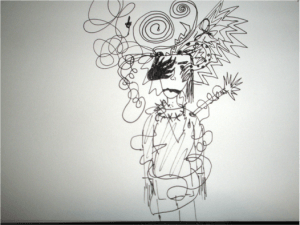Chronic pain is defined as any pain that is over 3 – 6 months in duration. Currently in Australia, 20% of people have reported to suffer from chronic pain. A specific and common branch of this is chronic low back pain (CLBP) and many find no resolve after years of therapy.
Common ideas about exercise and CLBP are that weak core/abdominal muscles lead to poor spine stability thus increase risk of low back pain and further injury. Transverse abdominis (TA) and multifidus are considered to be the major stabilisers of the trunk, therefore focus on isolating and strengthening these deep stabilisers will in turn reduce low back pain. Whilst there are strong forms of evidence in studies to support these ideas about exercise and the pathophysiology of chronic low back pain, the way to rehabilitate chronic back pain is evolving.
Whilst the TA and multifidus are anatomically significant in their role of spinal stability, functionally they make up one of the many muscles that contribute to posture and spinal stability, and the roles they play in the dynamic movements in life vary. Our daily postures are the result of many muscles working in unison and thus would be impractical to focus on only two.
Even in studies where it has been found that people with CLBP presented with weakness and/or atrophy in the deep core muscles, it has also been reflected in a whole body’s level of weakness and this is an important consideration when prescribing an rehabilitation program.
There is no current high level evidence that proves isolated training of the deep abdominal muscles is more effective than incorporating other training methods into rehabilitation for CLBP.
CLBP is a complex issue that, during the acute phase is usually of a patho-anatomical nature, as gradually after months and months most tissues related to the pain would have been healed. It can thus begin to be majorly influenced by factors of the person psycho-social factors, such as the fear of pain itself altering the motor pattern in the postural muscles.

What chronic pain can feel like
Psycho-social factors include both psychological and social factors, such as environment, relationships, support structure, coping strategies, hyper vigilance and illness behaviour.
Currently the best evidence supported method for CLBP is ‘pacing up’: slowly increasing the duration and amount of daily activities before the onset of pain. While improving movement and techniques, education on safely lifting and/or increasing the amount of exercise throughout the day such as walking.

Changing the negative factors in the psycho-social model of the person with chronic pain, should be as important as the exercise rehabilitation and in some cases, if not more important. By replacing passive coping strategies with active ones, looking at diet and lifestyle habits, education about the complexity of pain and how it does not always equal more damage, will in turn can improve support structures, motor control and movement.
Core exercises still have a role in rehabilitation but not as significantly as previously believed. As for some, particular core exercises act as a reliever for pain and confidence in movement, as well as restoring whole body strength.
Chronic low back pain is a complex condition which requires multi-faceted approach to rehabilitation. With more understanding about the condition itself, both patient and clinician can work towards a healthier, happier you.
If you want more information about CLBP or know someone who may be suffering from this condition please don’t hesitate in contacting one of our chiros at The Physio Movement on 1300 TPM FIT or visit our website at www.thephysiomovement.com.au and make an online booking.


